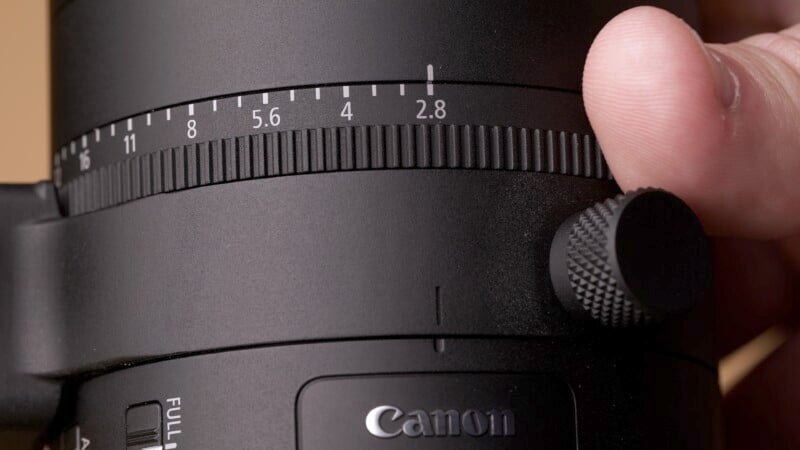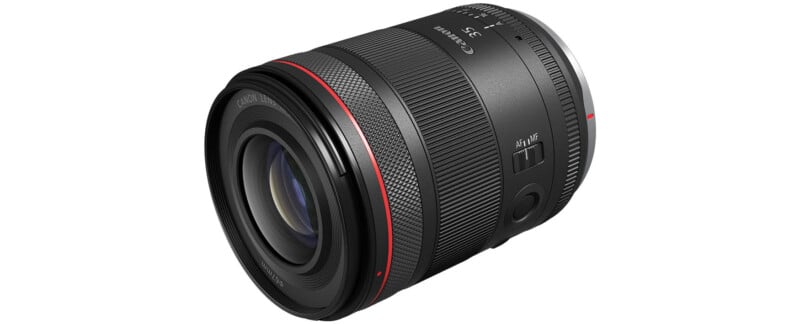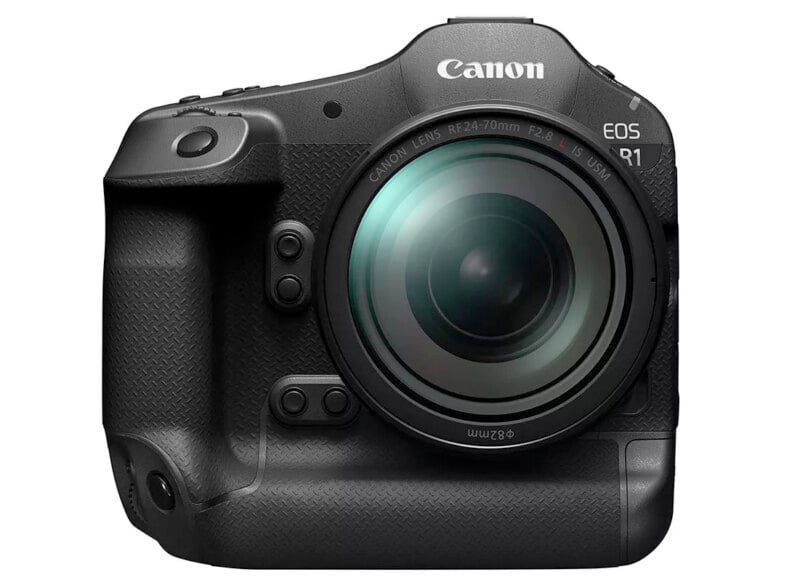![]()
Canon is aware of the complaints about the RF 35mm f/1.4 L VCM’s dedicated iris ring not working for still photography, and a fix is on the way. Sort of.
When Canon announced the RF 35mm f/1.4 L VCM lens last week, the much-requested lens did more than fill an f/1.4 prime lens void in Canon’s RF lineup, it also started a new series of hybrid prime lenses designed to appeal to photo and video users in equal measure. It also frustrated a sizable group of Canon fans because the RF 35mm f/1.4 carries forward a strange shortcoming from Canon’s RF 24-105mm f/2.8 L Z lens: an aperture control ring that doesn’t work during photo mode.

The dedicated iris control ring on the RF 24-105mm f/2.8 L Z and new RF 35mm f/1.4 L VCM currently only works during video recording on Canon EOS mirrorless cameras. In its coverage of the RF 35mm f/1.4 lens, Gizmodo Japan writes, “Please note that the ability to change the aperture value with this iris ring when shooting still images will only be available on EOS series cameras released after June 2024. Please note that with the current EOS series, it can only be used for video recording.”
When PetaPixel asked Canon USA about the matter, a Canon representative replied using the exact same wording as the English translation from Gizmodo Japan‘s article, confirming the situation.
It is worth noting that when Canon announced the RF 24-105mm f/2.8 L Z lens earlier this year, it also referred to “future” cameras being able to use the aperture ring during photography functions. At the time, the RF 35mm f/1.4 L VCM was an unknown entity, as was any specific future Canon camera.
To reiterate, the specific “June 2024” cutoff is new. This is not a timeline that Canon specified when it announced the RF 24-105mm f/2.8 L Z lens — Canon only said that new models launching in 2024 would support the dedicated iris ring for photo functions.

Has Canon zeroed in on cameras released “after June 2024” because the RF 35mm f/1.4 L VCM lens is coming this month, and any future camera, whenever it arrives, will make more use of its aperture ring? Or has Canon put this flag in the ground because a new camera is launching next month? Only time will tell, but Canon could have just as easily stayed the course and stuck with the same vague timeline it used when discussing the RF 24-105mm f/2.8 L Z lens.
The world knows that the highly-anticipated Canon EOS R1 is in the works, and will almost assuredly not launch this month given Canon’s typical timelines. There will, of course, be additional Canon EOS cameras released sometime after June, though the exact timing and models are up in the air.

However, none of this addresses the most obvious question: Why can’t current Canon EOS series cameras use the iris ring on Canon’s RF 24-105mm f/2.8 L Z and RF 35mm f/1.4 L VCM lenses during photography? Given that current cameras cannot work in this rather basic, normal way, but future ones will, it stands to reason that the limitation may be hardware-related, which is strange, to say the least.
PetaPixel requested clarity on the “how” and “why” of this puzzling limitation of the iris ring on Canon RF lenses but received only the statement above. The mystery remains unsolved for now, but rest assured, the iris ring will, for whatever reason, work for photography on Canon’s future EOS cameras.
